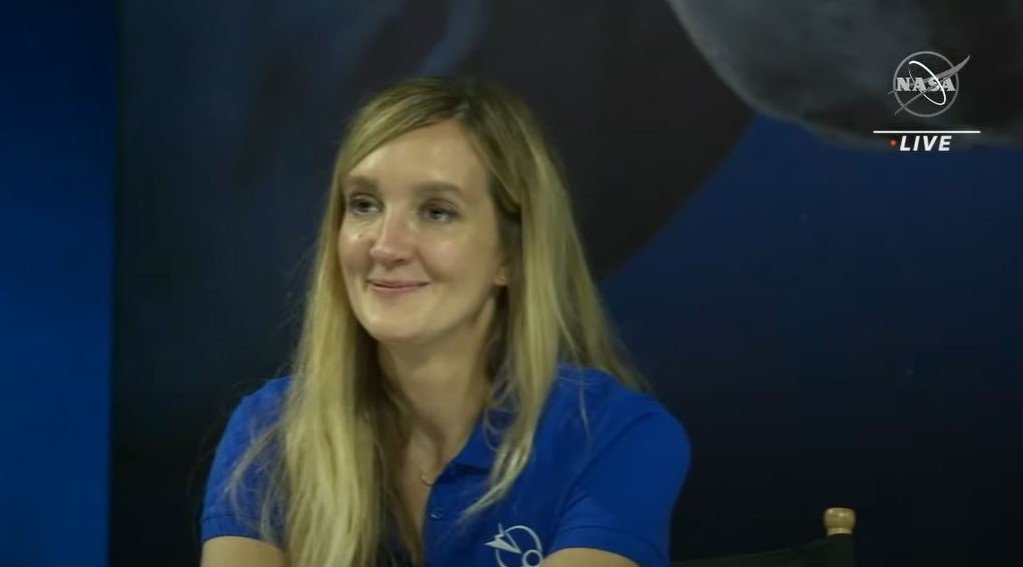Coming straight from the pages of a science fiction book, humanity achieved yet another milestone the past week. NASA, in collaboration with the John Hopkins University Applied Physics Laboratory and other international partners, deliberately crashed a spacecraft into a binary asteroid system on 26th September 2022. This is the first step toward solidifying our planet’s defense from the asteroids.
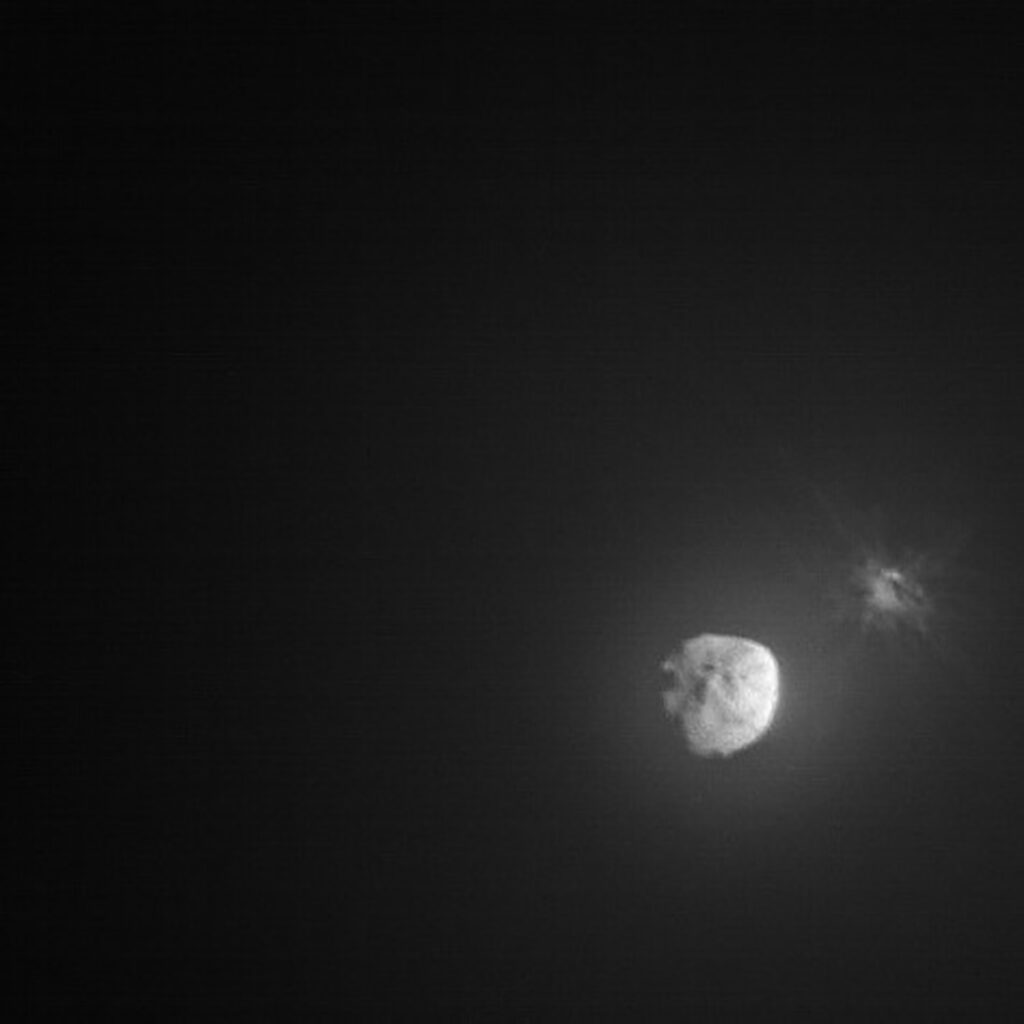
What is Planetary Defense and why it is even needed?
There are numerous ways that human civilization can be wiped from the Earth’s face. One of them – the threat of asteroids, meteors, or even comets, is potentially very high due to their significantly large number roaming around in space.
The extinction of dinosaurs is widely attributed to an asteroid that hit Earth around 65 million years ago on the Yucatan Peninsula in Mexico. It was a global mass extinction event. It is estimated that around 75% of Earth’s ecosystem died due to the devastating impact.
A recent event, not on the scale of mass extinction, did happen in Chelyabinsk, Russia, on Feb. 15, 2013. A small asteroid entered the Earth’s atmosphere unnoticed and broke over the city at an altitude of 28 miles. The blast was stronger than that of a nuclear explosion, with the energy of around 500 kilo-tonnes of TNT.

Fortunately, the debris did not fall directly upon any inhabited place, but the shockwave was extremely powerful in the vicinity. Window glasses were shattered and around 1200 people got injured, mainly from building debris and flying pieces of glass. The meteor was so bright that it momentarily even outshone the Sun, glowing 30 times brighter before landing.
This event served as a wake-up call to the governments and the space agencies. It was now imperative that these space bodies cannot be taken lightly. They should be regularly monitored for their trajectories in space, especially those that could pose a serious threat to humanity’s continuity on the blue planet.
After the Chelyabinsk event, NASA established a Planetary Defense Coordination Office (PDCO). The PDCO analyses data using its Near-Earth Object (NEO) Observation Programs. The objectives are:
a) to early detect potentially hazardous objects (PHOs) – a subset of NEOs,
b) warn the concerned authorities and the government of the impact level, and
c) devise strategies and technologies to mitigate such impacts in the future.
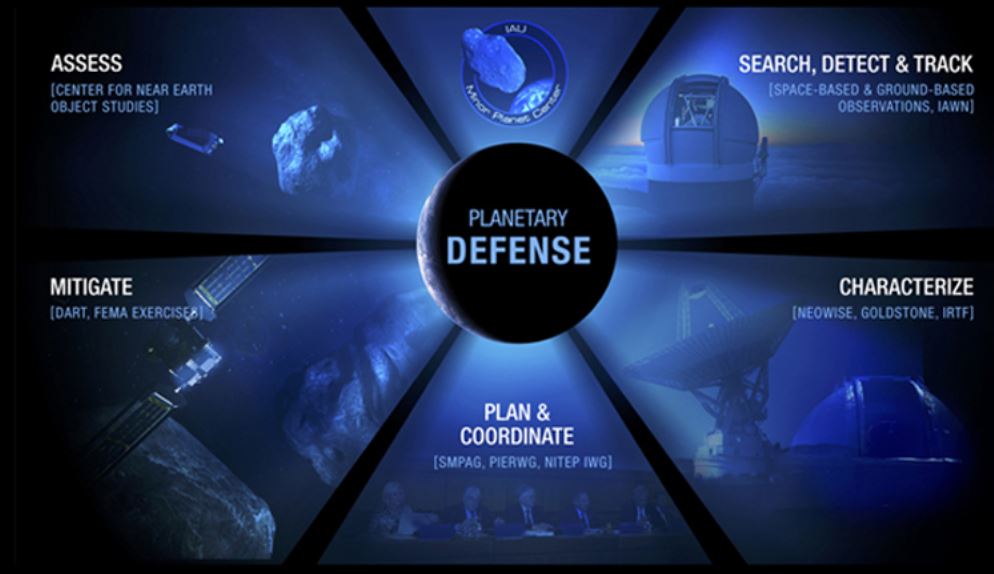
What is the World’s First Planetary Defense Mechanism?
NASA’s DART (Double Asteroid Redirection Test) is the first-ever mission designed with the sole purpose of experimenting and demonstrating an asteroid deflection test. It does so by changing the body’s motion in space through kinetic impact. The detailed mission can be read in one of our earlier articles here.
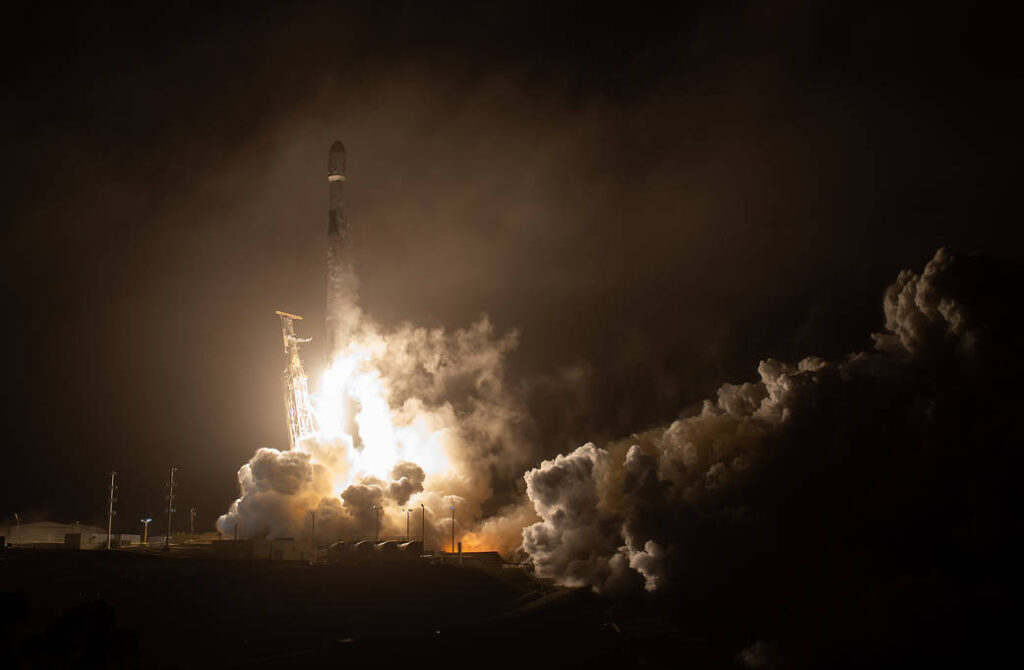
Launched in Nov 2021, the spacecraft flew 10 months in space and eventually collided with the binary asteroid – the Didymos system at 7:14 PM EDT/4:44 AM IST on 26th/27th September 2022. The collision was immensely successful. It was graciously captured by an accompanying component of the spacecraft in space as well as by the ground-based telescopes here on Earth.
Scientists had been studying the trajectory of the Didymos system – a binary asteroid comprising the bigger Didymos-A or Didymos asteroid and the smaller Didymos-B or Dimorphos asteroid, a moonlet of the former.
They analyzed that on 26th September, the asteroid’s orbit would be in a closer approach to Earth. Hence it was the perfect window for the spacecraft to perform the collision. With this timeframe, even the ground-based telescopes could track the event with not much difficulty.
It is to be noted here that even though the asteroid’s orbit was in a closer approach to Earth, it was still outside the Earth’s orbit and posed no threat to us. Even after the collision, the asteroid system cannot change its trajectory and come hurling toward us. So, it is a perfect testing ground for the technology designed to fulfill its purpose.
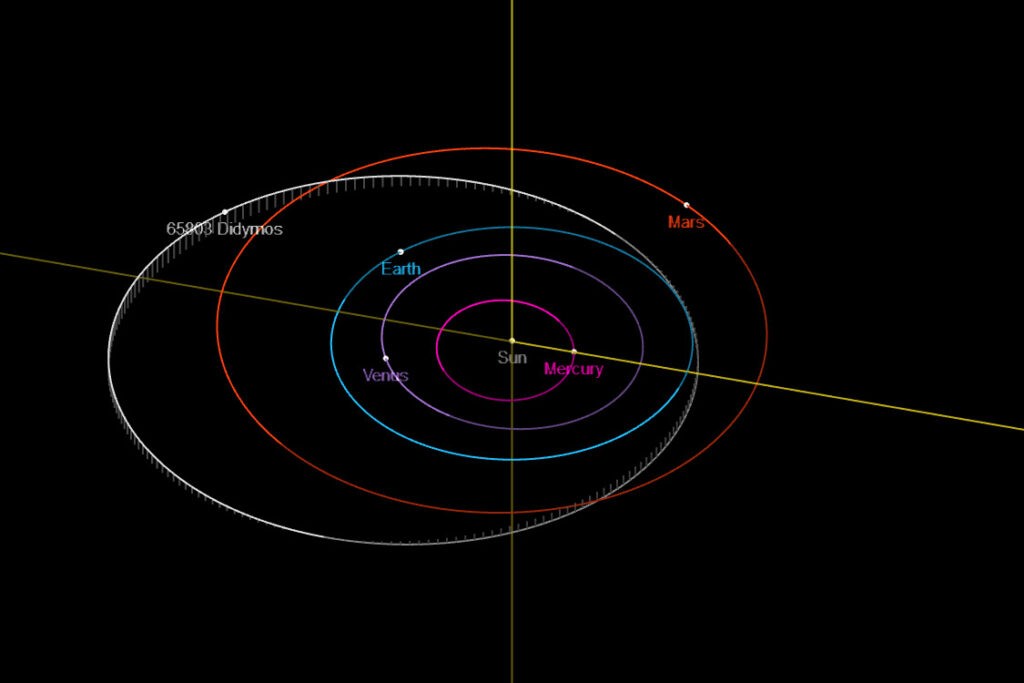
The moonlet takes around 12 hrs to orbit around the parent asteroid. It is estimated that after the collision, it will take around 11 hrs 45 mins to complete its orbit. It is evident that the decrease in the orbital time is very little, but that specifically is the goal of the DART mission – to not destroy but just give a nudge to an asteroid so as to deflect from its usual path.

A Bit of Mathematics to Better Understand the Space Dynamics
The orbital speed is given by the formula,

where G = gravitational constant, M = mass, R = radius
Plugging in the values of G, and M & R values of Earth,
V(orbit) = √(6.674×10-11m3kg-1s-2) * (5.9722×1024 kg) * (6.371 x 106 m)
= 29.78 km/s
Now, the time taken by Earth to move through its diameter in space,
time = distance/speed
= Earth’s diameter/Orbital speed
= 12742 km/29.78 km/s = 427.87 s
~ 7 min
i.e. Earth’s orbital speed of 29.78 km/s is fast enough to cover its diameter in 7 mins in space.
So, even if we can deflect an asteroid’s trajectory by a few minutes, over the time period (between its detection, deflection, and potential impact on Earth), its trajectory will no longer be in a collision path to Earth. She would have already moved away in space and time and it would be a definite miss for the asteroid.
The Mission’s Journey
The DART spacecraft has an onboard camera – DRACO (Didymos Reconnaissance and Asteroid Camera for Optical navigation) that serves both as a science instrument and navigation equipment. Its task is to find both the asteroids, select and focus on the smaller one, and then drive the spacecraft autonomously into it.
Fifteen days before the impact, an accompanying component of the spacecraft, LICIACube (Light Italian CubeSat for Imaging of Asteroids) detached from the main spacecraft in order to capture images of the impact and the cloud of ejected matter.
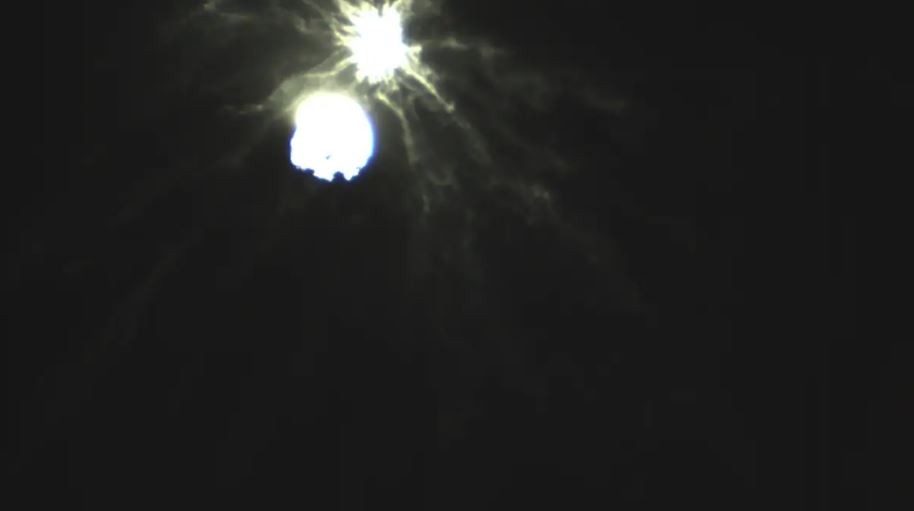
It is extremely difficult for any instrument to spot such rocks moving in space. The moonlet had never been observed directly and scientists had no knowledge of its structural composition. It was always lost in the glare of its parent asteroid.
DART had spotted the moonlet for the first time only about an hour before the collision. Afterwards, using its SMART Nav (Small-body Maneuvering Autonomous Real Time Navigation) algorithms, it could distinguish the moonlet.
During its final moments, the spacecraft sent back a series of photographs, The first was of the binary asteroid system. Later, pictures of the moonlet Dimorphos were sent as it started filling the view of the screen.
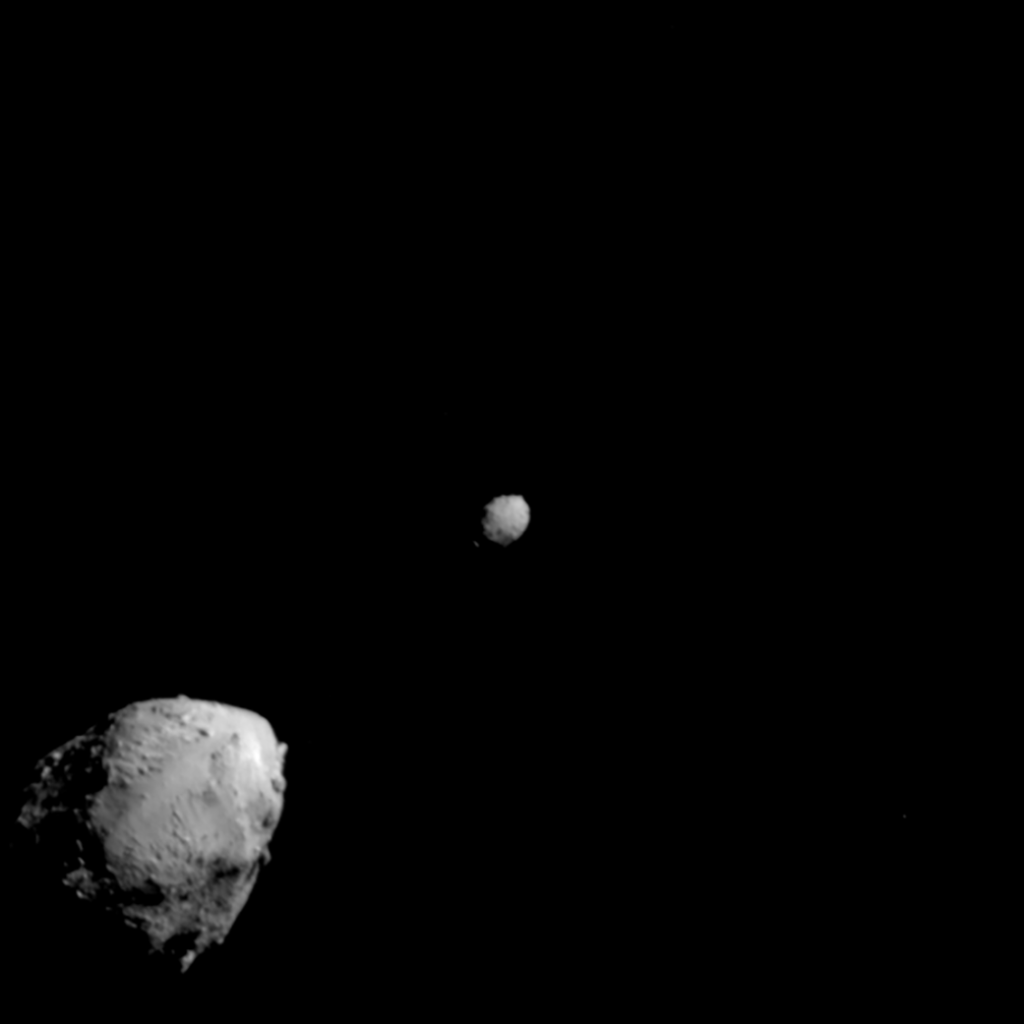

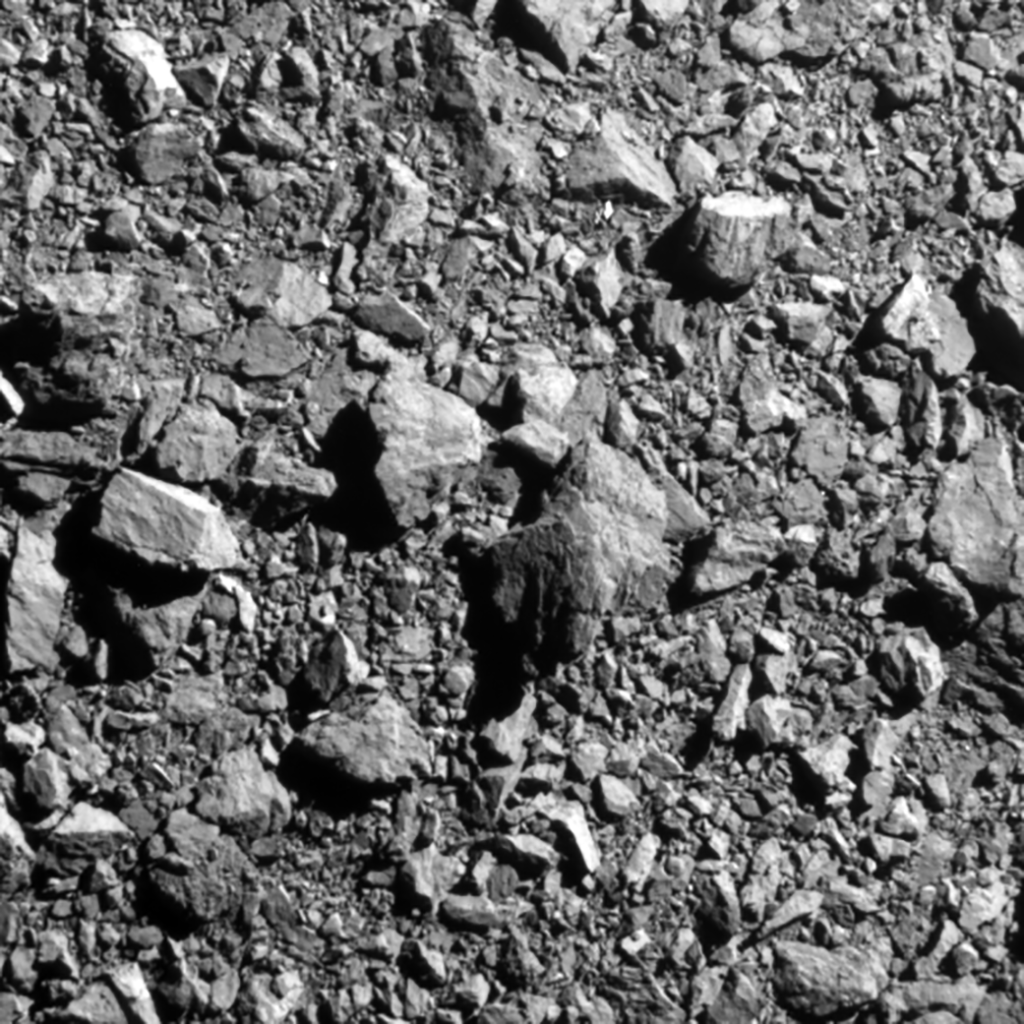
The Long Wait was Over
The people in the control room, as well as those watching it live, were spectators of a historic human endeavor. The mission’s engineers were in awe, elated, and gasping for their breath.
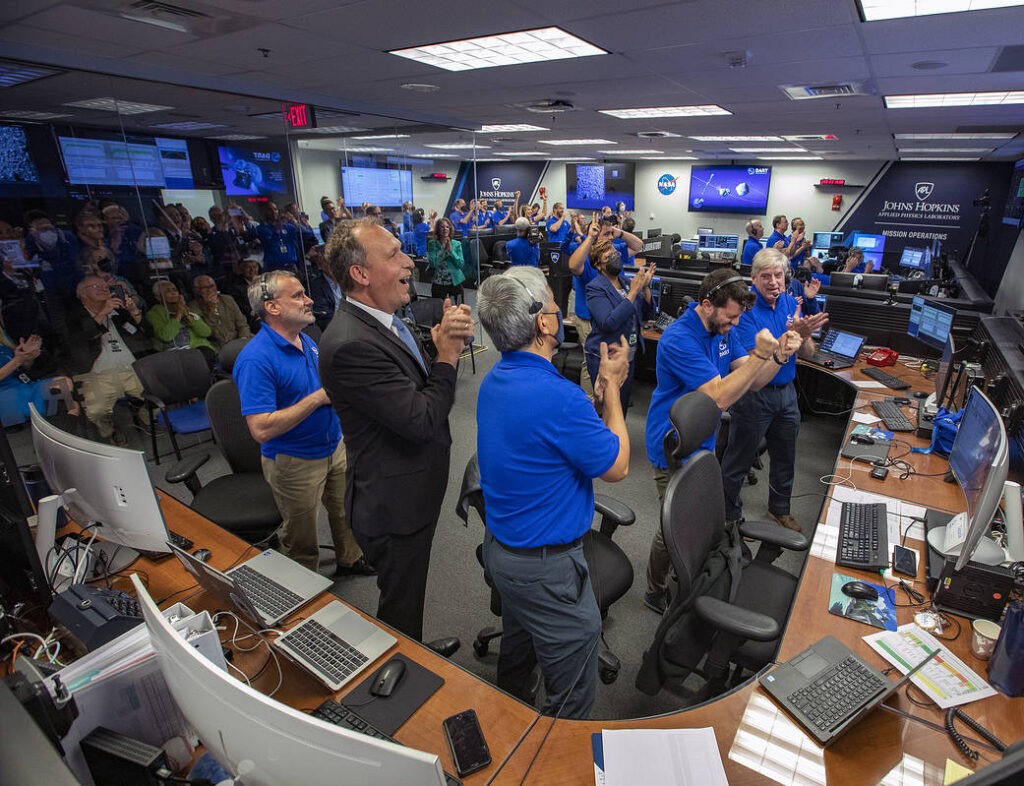
“I’m stumped,” uttered Jessica Sunshine, a planetary scientist at the University of Maryland (UMD), and DART investigator. “We knew it was going to be exciting, and I thought it was going to work, but nobody could have predicted that.”
Ralph Semmel, director of the Johns Hopkins University Applied Physics Laboratory said, “Normally, losing signal from the spacecraft is a very bad thing. But in this case, it was the ideal outcome.”
What Lies Ahead
The investigation team in the coming days will start observing Dimorphos using the ground-based telescopes to analyze the impact of the DART collision and how much the orbital speed of the moonlet changed.
From the images released by the Hubble Space Telescope and the James Webb Space Telescope, researchers will gain knowledge about the structural composition of Dimorphos, and the amount and speed of material ejected due to the collision. As these telescopes operate in different wavelengths, they will help in determining the particle size distribution of the material as well.
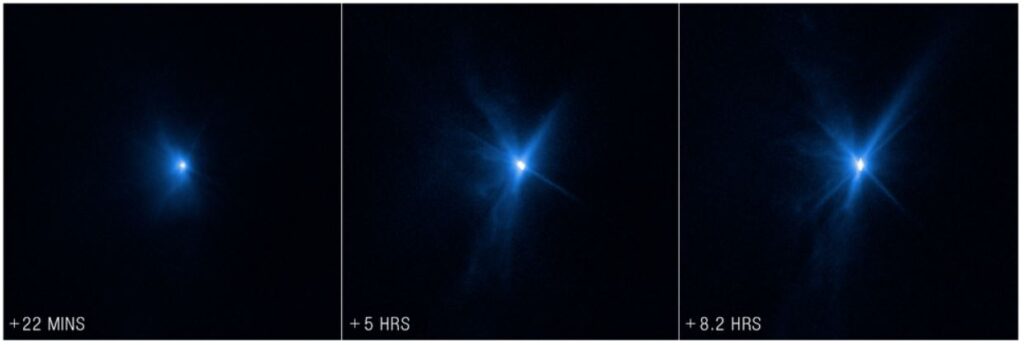

Using both the aforementioned techniques, scientists will be able to determine the effectiveness of a kinetic impact in altering an asteroid’s orbital path.
The European Space Agency (ESA) will launch the Hera mission in 2024 to directly investigate the Didymos asteroid by performing high-resolution visual, laser, and radio mapping of the moonlet. It will particularly focus on the crater made by DART’s collision along with an accurate calculation of Dimorphos’s mass.
Final Thoughts
The citizens of planet Earth can heave a sigh of relief as now we have the knowledge and technology to overcome any such potential threat to our existence.
In the words of Elena Adams, the DART mission systems engineer at John Hopkins APL:
“I think that earthlings should sleep better. Definitely, I will”
We will, for sure Elena, and thank you and the team once again!!
